
Article • Radiation protection
Robotic assistants enter remote stenting
Shielding cardiologists from harmful radiation is the goal for two systems capable of navigating the vascular highway.

Shielding cardiologists from harmful radiation is the goal for two systems capable of navigating the vascular highway.

A Spanish team has, for the first time, successfully placed a pulmonary valve using catheterisation through the hepatic vein in a paediatric patient. Specialists believe this type of intervention could become an interesting alternative when traditional access points are not available.

Which CRT patients can be ‘downgraded’ from a CRT-D device with defibrillator function to a CRT-P with just a pacemaker function? This, with two further current CRT issues – chronotropic incompetence and telemonitoring of CRT patients – featured prominently at the Europace-Cardiostim Congress in Vienna.

A formerly bitter competition between cardiology and cardiac surgery is increasingly replaced by constructive cooperation. The Austrian Society of Cardiology (ÖKG) even held its annual congress along with the Austrian Society of Thoracic and Cardiovascular Surgery this year.
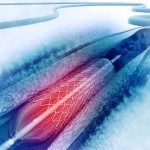
Coronary angioplasty is arguably the most revolutionary breakthrough in the history of cardiology. While the technique is today performed on millions of patients worldwide, its origins can be traced back to Zurich, Switzerland, in the late 1970s.

Every cancer is different and every patient is different. This insight gained in personalised medicine prompted oncology researchers to focus more on the individual patient’s immune system. It is particularly the immune system’s ability to destroy cancer cells that raised hope.

Computer scientist Stefanie Speidel, who became a Professor for Translational Surgical Oncology at the National Centre for Tumour Diseases, in Dresden in Germany this April, researches intelligent assistance systems for the operating theatre.

A team from Michigan Medicine developed a health behavioral intervention called Reach Out including mobile-messaging components, which they plan to use throughout a trial.
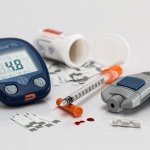
One in four patients in a university hospital suffers from diabetes (22 percent), and again as many suffer from prediabetes (24 percent), a current study finds. Furthermore, patients with diabetes have prolonged hospital stays and a higher risk of complications.

“When you’re told you have cancer, it’s not a light thing.” And when that diagnosis comes, patients and medical staff alike want to be able to focus on one thing: care that leads to the best outcome.

A protein found in the edible mushroom known as "shaggy ink cap" might be able to kill a type of leukemia cell, new research suggests.
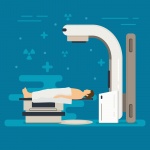
Breast cancer patients who have radiotherapy targeted at the original tumour site experience fewer side effects five years after treatment than those who have whole breast radiotherapy, and their cancer is just as unlikely to return.

In more than 21% of complex anatomical osteosynthesis procedures, an intraoperative improvement of the implant position or a revision of reduction has to be performed (Recum von, J. et al., Unfallchirurg 2012, 115:196-201, Die intraoperative 3D-C-Bogen-Anwendung. State of the art).
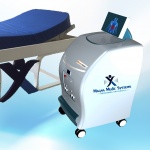
Unlike the USA, Italy, Germany or the Netherlands, Spain does not include hyperthermia in its national health catalogue. Worse, many non-medical centres are increasingly offering hyperthermia as an alternative treatment, a situation that infuriates Spanish oncologic radiotherapists.

Biotronik’s Home Monitoring is an award-winning remote cardiac monitoring system that automatically collects data from a patient’s cardiac device, enabling the physician to review cardiac function independently of in-office visits.
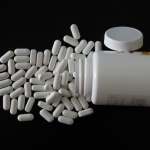
In a review of half a dozen published studies in which patients self-reported use of opioids prescribed to them after surgery, researchers at Johns Hopkins report that a substantial majority of patients used only some or none of the pills, and more than 90 percent failed to dispose of the leftovers in recommended ways.

Findings suggest that modifying the cell replication cycle could make combined therapies more successful.
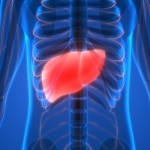
Non-alcoholic fatty liver disease (NAFLD) is one of the most frequent liver diseases worldwide and an estimated 20 million people in Germany are affected.

Early-stage colon cancer patients could benefit in the future from specific genetic tests that forecast their prognosis and help them make the right decision regarding chemotherapy.

People who survive a stroke or a mini-stroke without early complications have an increased risk of death, another stroke or heart attack (myocardial infarction) for at least 5 years following the initial stroke, found a new study published in the Canadian Medical Association Journal.

Although dementia is most often seen in adults, childhood or adolescent dementia does occur. A team of researchers from the University of Würzburg believes that established therapeutic drugs might be effective against childhood dementia.

Experts say that one-third of the world’s dementia cases could be prevented by managing lifestyle factors such as hearing loss, hypertension and depression.

The fourth World Brain Day (July 22) revolves around stroke – how to detect it, how to prevent it, how to treat it. Raad Shakir, president of the World Federation of Neurology (WFN), seizes the opportunity to raise awareness about a disease that is becoming more common globally – but also preventable to a large extent.

Many children with autism spectrum disorder experience significant gastrointestinal issues, but the cause of these symptoms is unknown. Professionals in the medical community have suggested a potential link between diet and gastrointestinal issues related to autism. Now, researchers from the University of Missouri School of Medicine have found that diet is not a contributing factor in these…

An international research team led by Université de Montréal medical professor Christopher Rudd, director of research in immunology and cell therapy at Maisonneuve-Rosemont Hospital Research Centre, has identified a key new mechanism that regulates the ability of T-cells of the immune system to react against foreign antigens and cancer.